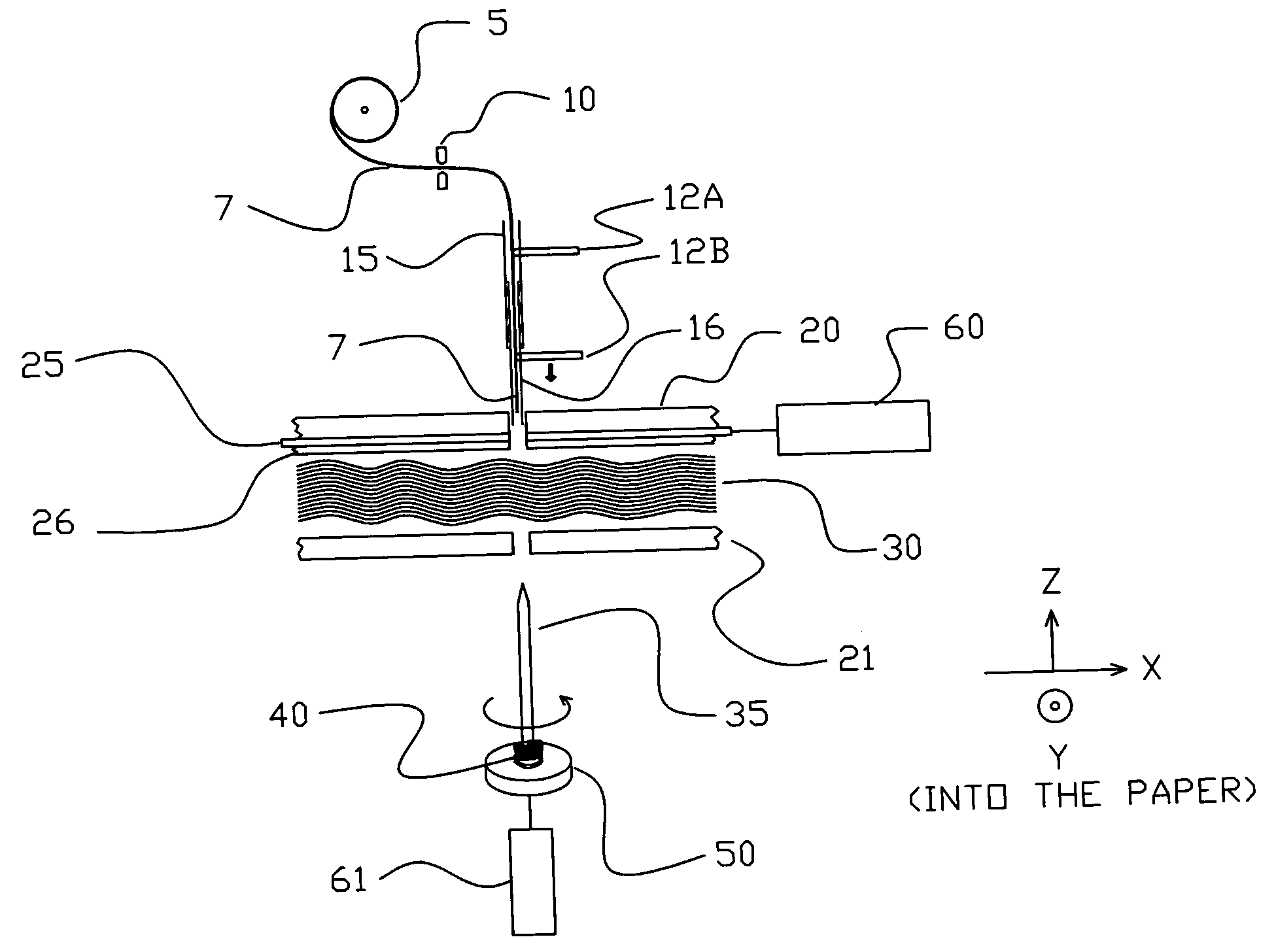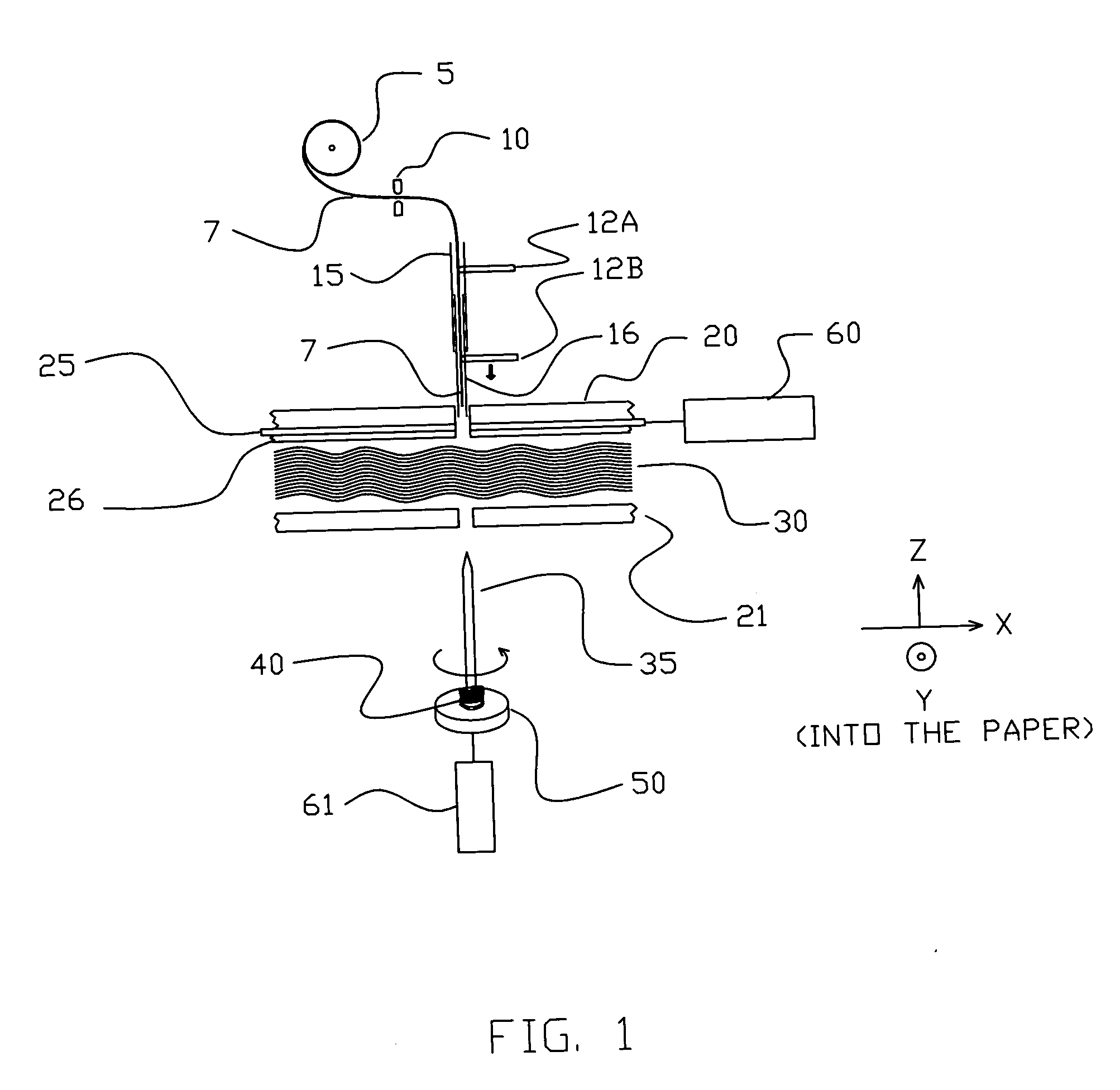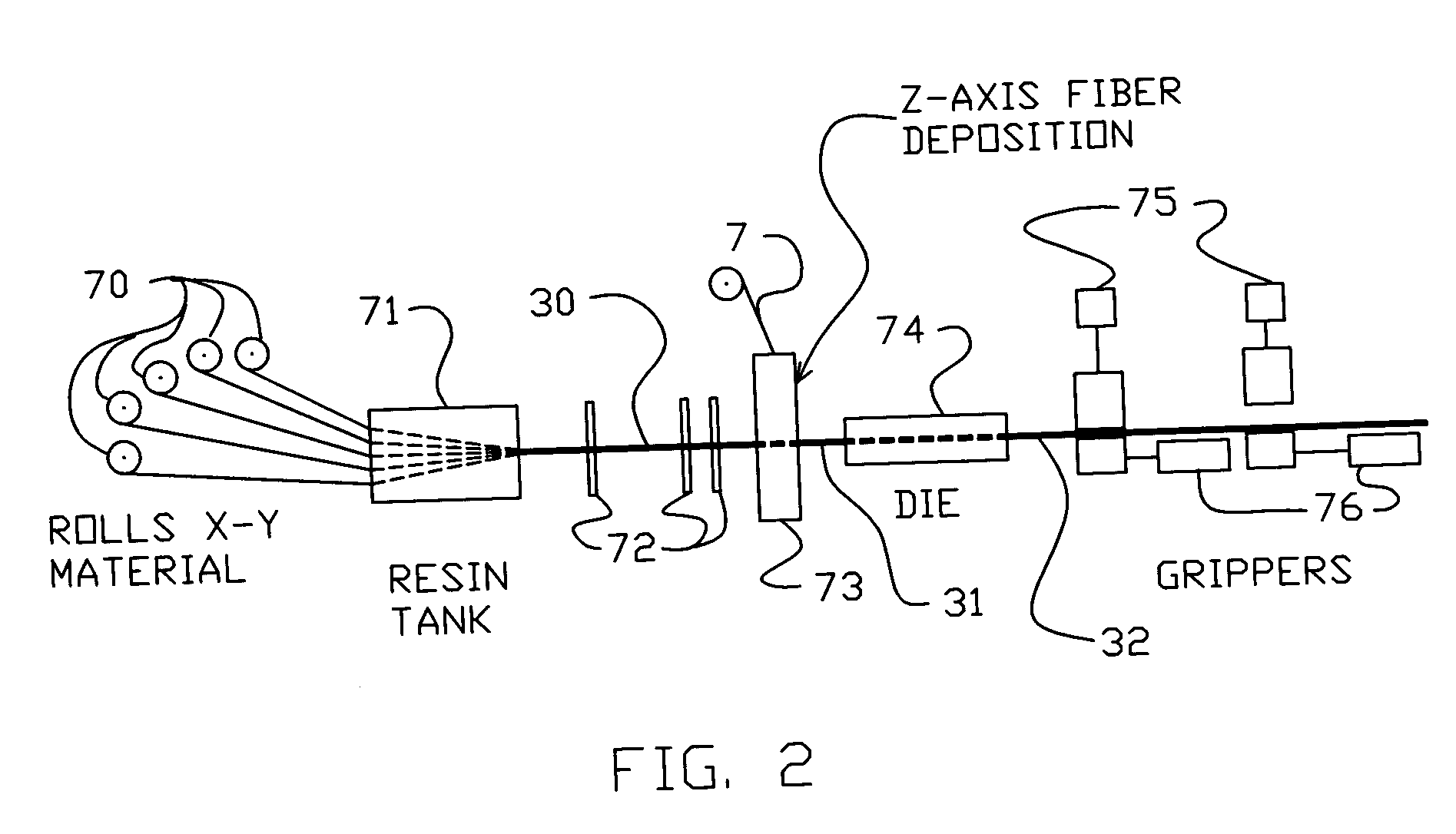Method of inserting z-axis reinforcing fibers into a composite laminate
a technology of z-axis fiber reinforcement and composite laminate, which is applied in the direction of wood layered products, chemistry apparatus and processes, ways, etc., can solve the problems of matrix material cracking or buckling, cost and labor, and methods have deficiencies
- Summary
- Abstract
- Description
- Claims
- Application Information
AI Technical Summary
Benefits of technology
Problems solved by technology
Method used
Image
Examples
Embodiment Construction
[0031] The method of inserting z-axis reinforcing fibers into a composite laminate will now be described by referring to FIGS. 1-6 of the drawings.
[0032]FIG. 1 shows a schematic elevation view of the novel z-axis fiber deposition process and the associated machinery. The key element of only one z-axis fiber deposition unit is illustrated in this figure. Following a description of FIG. 1, a more detailed, expanded description of multiple z-axis fiber deposition components will be discussed.
[0033] In FIG. 1, the cross section of a typical x-y axis material is identified by numeral 30. Material 30 is a continuously traveling laminate of x-y axis material. The direction of pultrusion and the continuous processing is defined as being in the x-axis direction and is left-to-right. The y-axis direction is into the paper. The z-axis direction is from top-to-bottom, through 3-D material 30. Only a few layers, or “plies” of x-y axis material 30 are shown, although clearly, additional layers ...
PUM
| Property | Measurement | Unit |
|---|---|---|
| Thickness | aaaaa | aaaaa |
Abstract
Description
Claims
Application Information
 Login to View More
Login to View More - Generate Ideas
- Intellectual Property
- Life Sciences
- Materials
- Tech Scout
- Unparalleled Data Quality
- Higher Quality Content
- 60% Fewer Hallucinations
Browse by: Latest US Patents, China's latest patents, Technical Efficacy Thesaurus, Application Domain, Technology Topic, Popular Technical Reports.
© 2025 PatSnap. All rights reserved.Legal|Privacy policy|Modern Slavery Act Transparency Statement|Sitemap|About US| Contact US: help@patsnap.com



